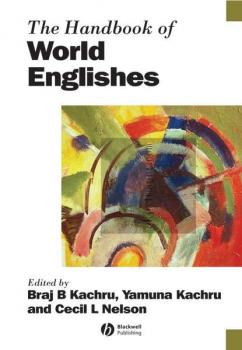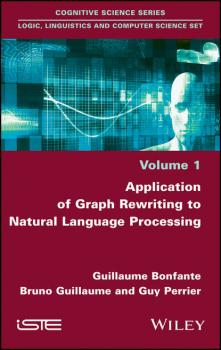Зарубежная образовательная литература
Различные книги в жанре Зарубежная образовательная литератураResearch Methods in Psycholinguistics and the Neurobiology of Language
The first comprehensive guide to research methods and technologies in psycholinguistics and the neurobiology of language Bringing together contributions from a distinguished group of researchers and practitioners, editors Annette M. B. de Groot and Peter Hagoort explore the methods and technologies used by researchers of language acquisition, language processing, and communication, including: traditional observational and behavioral methods; computational modelling; corpus linguistics; and virtual reality. The book also examines neurobiological methods, including functional and structural neuroimaging and molecular genetics. Ideal for students engaged in the field, Research Methods in Psycholinguistics and the Neurobiology of Language examines the relative strengths and weaknesses of various methods in relation to competing approaches. It describes the apparatus involved, the nature of the stimuli and data used, and the data collection and analysis techniques for each method. Featuring numerous example studies, along with many full-color illustrations, this indispensable text will help readers gain a clear picture of the practices and tools described. Brings together contributions from distinguished researchers across an array of related disciplines who explain the underlying assumptions and rationales of their research methods Describes the apparatus involved, the nature of the stimuli and data used, and the data collection and analysis techniques for each method Explores the relative strengths and weaknesses of various methods in relation to competing approaches Features numerous real-world examples, along with many full-color illustrations, to help readers gain a clear picture of the practices and tools described
Indefinites and the Type of Sets
Indefinites and the Type of Sets explores a new theory of indefinite noun phrase interpretation and definiteness effects. Provides an introduction to aspects of the semantics of noun phrases, as well as comparing alternate theories. Explores a new theory of indefinite noun phrase interpretation and definiteness effects. Written accessibly by one of the world’s most prominent formal semanticists. Useful for students and scholars in formal semantics as well as the neighboring fields of syntax, pragmatics, and the philosophy of language.
The Handbook of Clinical Linguistics
The Handbook of Clinical Linguistics brings together an international team of contributors to create an original, in-depth survey of the field for students and practitioners of speech-language pathology, linguistics, psychology, and education. Explores the field of clinical linguistics: the application of the principles and methods of linguistics to the study of language disability in all its forms Fills a gap in the existing literature, creating the first non-encyclopedic volume to explore this ever-expanding area of linguistic concern and research Includes a range of pathologies, with each section exploring multilingual and cross-linguistics aspects of the field, as well as analytical methods and assessment Describes how mainstream theories and descriptions of language have been influenced by clinical research
The Handbook of World Englishes
The Handbook of World Englishes is a collection of newly commissioned articles focusing on selected critical dimensions and case studies of the theoretical, ideological, applied and pedagogical issues related to English as it is spoken around the world. Represents the cross-cultural and international contextualization of the English language Articulates the visions of scholars from major varieties of world Englishes – African, Asian, European, and North and South American Discusses topics including the sociolinguistic contexts of varieties of English in the inner, outer, and expanding circles of its users; the ranges of functional domains in which these varieties are used; the place of English in language policies and language planning; and debates about English as a cause of language death, murder and suicide.
An Introduction to Language Policy
An Introduction to Language Policy: Theories and Method is a collection of newly-written chapters that cover the major theories and methods currently employed by scholars active in the field. provides an accessible introduction to the study of language policy research and language’s role in social life consists of newly commissioned essays written by internationally recognized scholars helps define and describe a growing field of inquiry and is an authoritative source for students, scholars and researchers in linguistics, applied linguistics, education, policy studies and related areas includes section overviews, annotated chapter bibliographies, and discussion questions
Discourse Readjustment(s) in Contemporary English
This study examines the linguistic tools which enable speakers and writers to propose adjustments and re-adjustments of the sentences they’ve just produced, as well as the goals they fulfil by doing so. We examine corrections, reformulations, specifications, modifications of points of views and link them with discursive strategies. (Re)-adjustments can be made in order to express oneself in a better way, to favor comprehension by adapting to the addressee, to structure one’s intervention, to play on the potentialities of language (polysemy, homonymy, ambiguity), to mention the main purposes associated with the use of those devices. The study focuses on the markers associated with those strategies. Therefore, it links the syntactic, semantic and pragmatic levels.
Application of Graph Rewriting to Natural Language Processing
The paradigm of Graph Rewriting is used very little in the field of Natural Language Processing. But graphs are a natural way of representing the deep syntax and the semantics of natural languages. Deep syntax is an abstraction of syntactic dependencies towards semantics in the form of graphs and there is a compact way of representing the semantics in an underspecified logical framework also with graphs. Then, Graph Rewriting reconciles efficiency with linguistic readability for producing representations at some linguistic level by transformation of a neighbor level: from raw text to surface syntax, from surface syntax to deep syntax, from deep syntax to underspecified logical semantics and conversely.
The Ethnography of Communication
The Ethnography of Communication presents the terms and concepts which are essential for discussing how and why language is used and how its use varies in different cultures. Presents the essential terms and concepts introduced and developed by Dell Hymes and others and surveys the most important findings and applications of their work. Draws on insights from social anthropology and psycholinguistics in investigating the patterning of communicative behavior in specific cultural settings. Includes two completely new chapters on contrasts in patterns of communication and on politeness, power, and politics. Incorporates a broad range of examples and illustrations from many languages and cultures for analyzing patterns of communicative phenomena.
The Handbook of Speech Perception
The Handbook of Speech Perception is a collection of forward-looking articles that offer a summary of the technical and theoretical accomplishments in this vital area of research on language. Now available in paperback, this uniquely comprehensive companion brings together in one volume the latest research conducted in speech perception Contains original contributions by leading researchers in the field Illustrates technical and theoretical accomplishments and challenges across the field of research and language Adds to a growing understanding of the far-reaching relevance of speech perception in the fields of phonetics, audiology and speech science, cognitive science, experimental psychology, behavioral neuroscience, computer science, and electrical engineering, among others.









